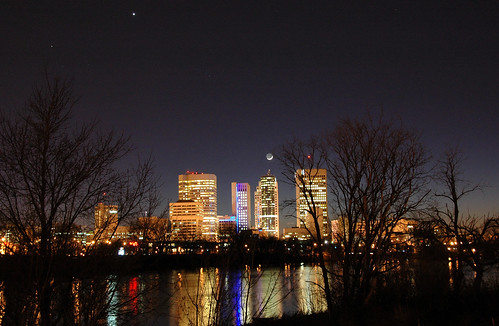Is Winnipeg Soulless?
As usual Winnipeg is bogged down in controversy. Why do we need BRT? Why do we need a new stadium? Why do we need a Human Rights Museum? Why do we need a better zoo? Why do we need Bears on Broadway. Why do we need more high rise apartments in my neighborhood? Why do we need Ikea?
I don't want THAT in my back yard. Who needs art? Why should we spend money subsidizing education? Why should the city spend money on THAT development?
When did Winnipeg become such a negative place? We might well be the most unimaginative metropolis in Canada. We seem to be satisfied with the status quo.
Perhaps that is what we prefer: never-ending bitching about how bad off we are. But any time something new and creative comes our way we say absolutely not. It's ugly. It costs too much.
Previous generations of politicians at every level have spent our tax dollars like drunken sailors leaving us with a massive infrastructure deficit. Generations of piss poor civic planning in Winnipeg have left us with a real dog's breakfast of poorly maintained streets and traffic lights and sprawl. Add in a government that believes more bureaucracy is the only way to go.
Now we have to fix it. Unfortunately that fix is not inexpensive. We also have to keep living. Too many think that if we just stop spending everything will be better. Maybe, but not so much when we talk about cities. Winnipeg will not grow and prosper if we cannot provide balance. To me balance includes:
* generous social programs and training, taking care of the less privileged, helping them to become contributing citizens
* competent planning and quality infrastructure management and execution
* intelligent transit development
* then there are the intangibles that make a city warm and welcoming: trees and art and sport and culture and learning and food...
Nothing will get done properly in a vacuum. We need a real vision followed by a plan and excellent execution of the plan. That is not available in Winnipeg today. But if it were we don't seem to have the will to do it.
I have a dream of what I'd like Winnipeg to become. I have a passion for Winnipeg that allows me precious little patience for all the negativity, the naysayers and nimbiers that seem to dominate this fair burgh. We second and third guess absolutely everything.
Some will argue reality gets in the way of one's dream. True. But we do treat ourselves from time to time. Maybe splurge on a new jacket. Buy that car we've always wanted. Renovate the kitchen. Small things that are maybe a little more than we can afford but they form part of our fabric of life.
That is what museums and football stadiums and parks and art mean to a city. They also mean different things to different people. I believe we have to provide a myriad of treats for everyone to become a city that is more than mere bricks and mortar.
Or we can stop building anything that might not be necessary for the next 20-40 years while we balance the books and make our roads the envy of the country. But we might well end up a city without soul.
I don't want to live in that city.







